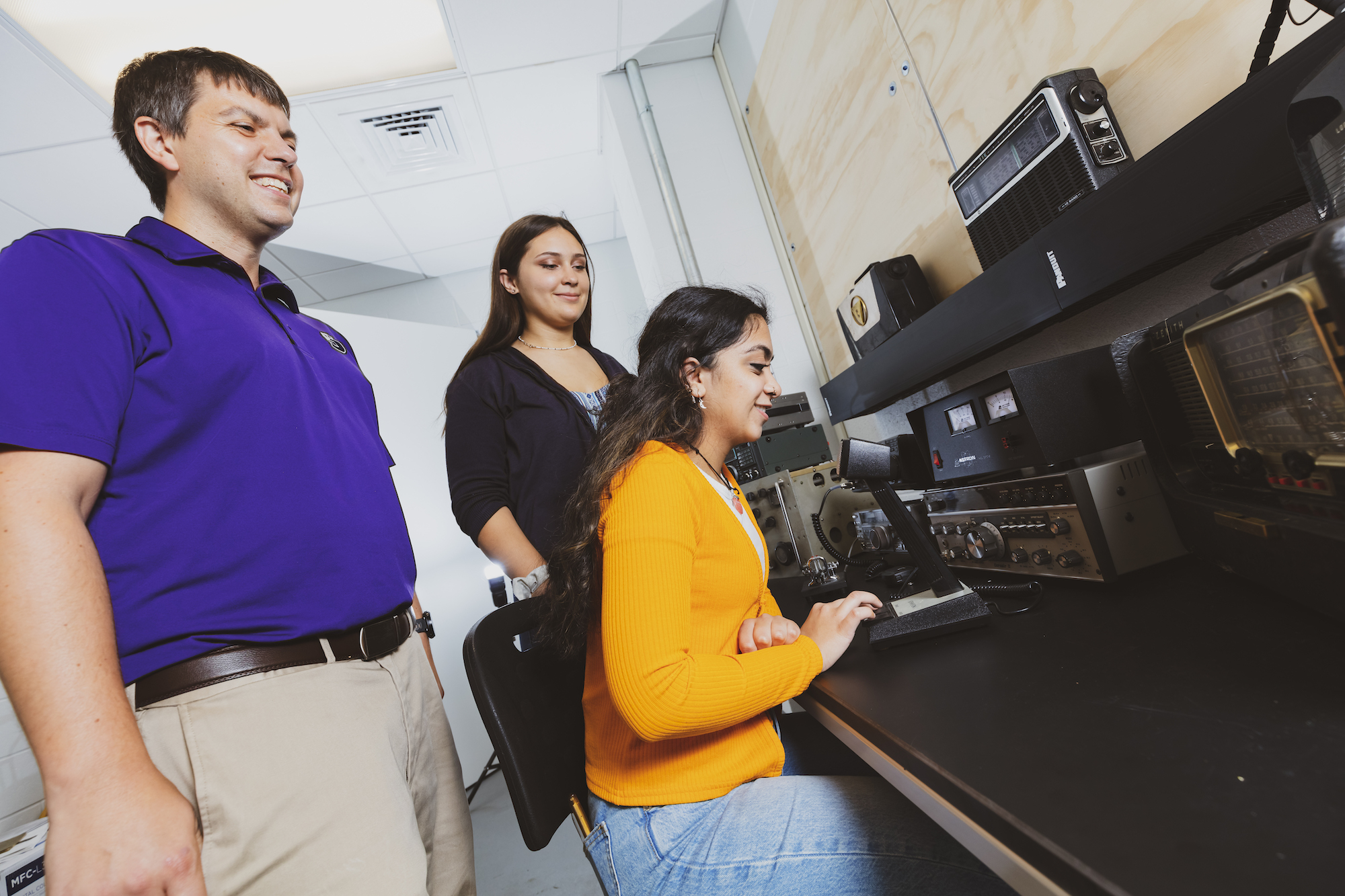How Ham Radio Operators Do Eclipse Science
Amateur radio operators are joining forces and using radio waves to understand how eclipses affect the atmosphere.

Dr. Nathaniel Frissell with students Veronica Romanek and Simal Sami at the University of Scranton W3USR ham radio station. Credit: Byron Maldonado
While people across the country don eclipse glasses and turn their gaze skyward for Saturday’s eclipse, amateur radio operators will be heading to their transmitters.
During nationwide competitions known as QSO parties, amateur or “ham” radio operators working in tandem can use radio waves to observe how eclipses affect the atmosphere. And that can help explain the quirks of lower frequency radio communication, which can power long-distance services like transoceanic air traffic control, ship navigation, and military communication.
Eclipses have a documented effect on a layer of free-floating ions around the Earth, called the ionosphere. During the day, the sun’s ultraviolet rays and X-rays knock electrons off of their positive counterparts, separating the atmosphere into layers of charged particles. At night, the particles find their way back to one another and neutralize. When the ionosphere has a high density of electrons as a result of sunlight, radio signals (especially ones at lower frequencies than what your typical radio station uses) can bounce off of it and travel a great distance. But during an eclipse, darkness is focused onto specific places on Earth—neutralizing just a section of the atmosphere for a period of time. This means that eclipses, like weather and solar flares, can affect how radio works. But just how they affect it is unclear.
“We understand, on average, what the atmosphere is supposed to look like day compared to night, or June compared to January,” says Dr. Nathaniel Frissell, a QSO party host and assistant professor at the University of Scranton. “But a lot of the small scale features, or the short time duration features, we just don’t have a good handle on,” he says. That’s where ham radios come in.
During QSO parties, radio operators communicate with as many other stations as possible to see who can establish the highest number of connections, called “spots,” within a given time period. Thousands of radio connections can occur all over the country in one day. This high volume, and the fact that ham radio operators use a variety of frequencies, helps researchers pinpoint the locations where an eclipse is affecting radio contact.
During the 2017 total eclipse, ham radio data showed that spots at a certain frequency (14 megahertz) started dropping out right as the path of totality passed over their midpoints. That data came from a NASA-funded QSO party that Frissell threw, and research based on the event showed that radio connections changed as a result of the eclipse.
Understanding how changes in the ionosphere impact different radio frequencies could help radio users better perform essential communications at distances across the world. “Ham radio operators, emergency responders…ships at sea, aircrafts that are going over polar regions, they’re going to have radios that are equipped with these lower frequencies,” Frissell says.
To join the HamSCI project, all you need to do is ask. And, depending on where you are, build a makeshift radio station yourself. All are welcome, Frissell says. “You’ll have people with years of experience. And then you have someone who’s just thrown up some wires in a tree.”
Emma Lee Gometz is Science Friday’s Digital Producer of Engagement. She writes SciFri’s “Science Goes To The Movies” series and is a journalist and illustrator based in Queens, NY.